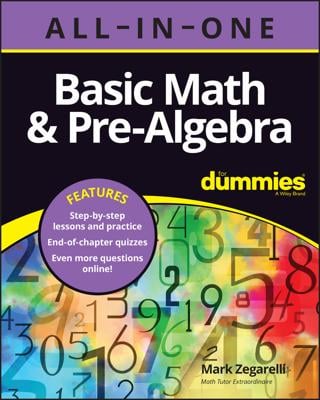Basic Math & Pre-Algebra All-in-One For Dummies (+ Chapter Quizzes Online)
Explore Book Buy On AmazonThe more unlikely an event is, the further to the left of the line you mark the probability. The more you think something will happen, the further to the right the event goes on the number line.
The number line lets you give a gut-feeling indication of how likely something is to happen – you’re pretty sure the sun will rise tomorrow, so you can mark the sun rising at the very right end of the number line. You think the supermarket having bananas for sale tomorrow is a bit less likely, so that event goes a little to the left on the number line.

Converting your gut-feeling estimate on the number line into an actual number is easy if you follow these simple steps:
-
Measure the number line.
-
Measure how far from the left-hand end the mark is.
-
Divide your answer from Step 2 by your answer from Step 1.
Making your probability number line 10 centimetres long will make the divide sum much easier.

